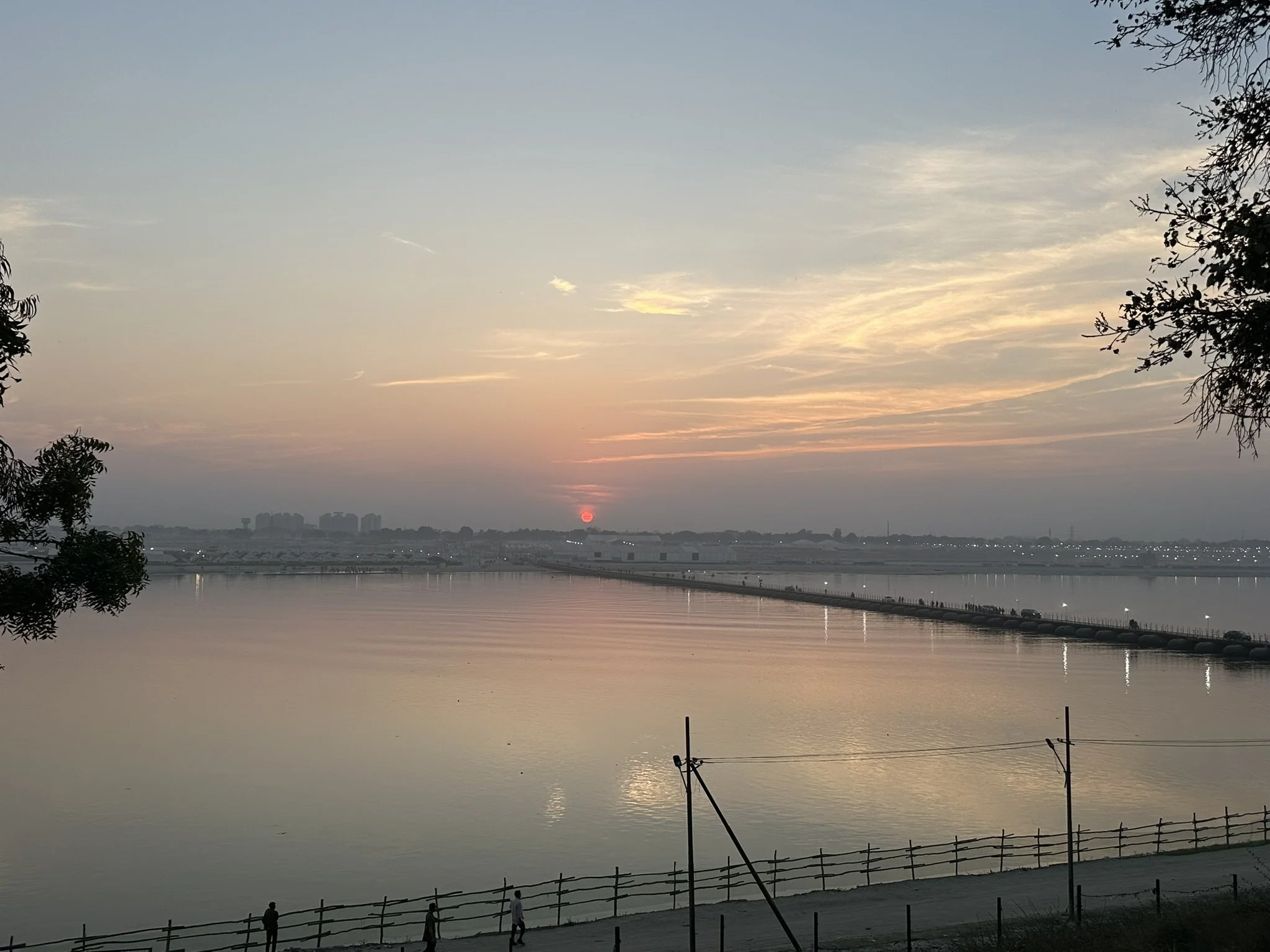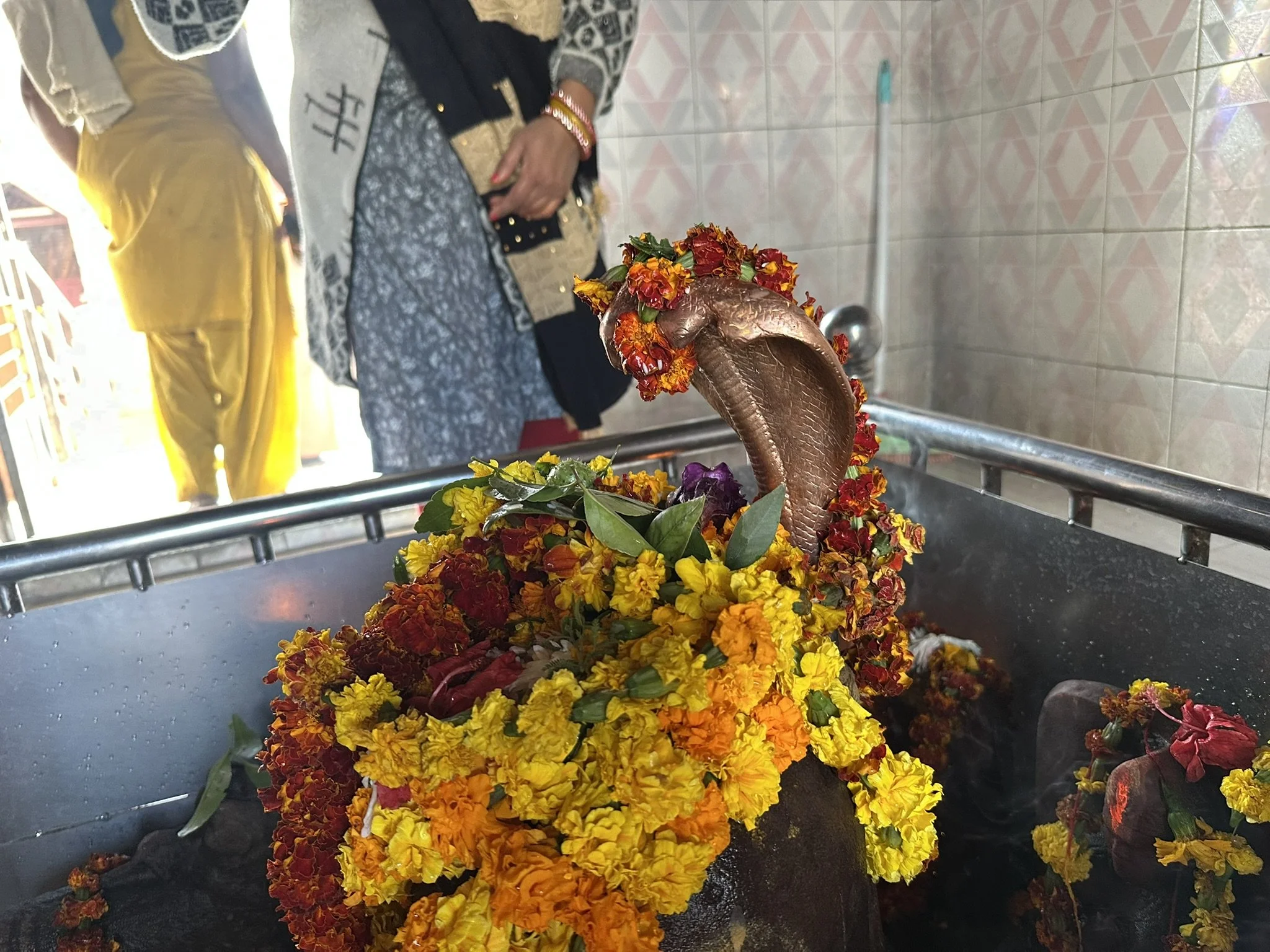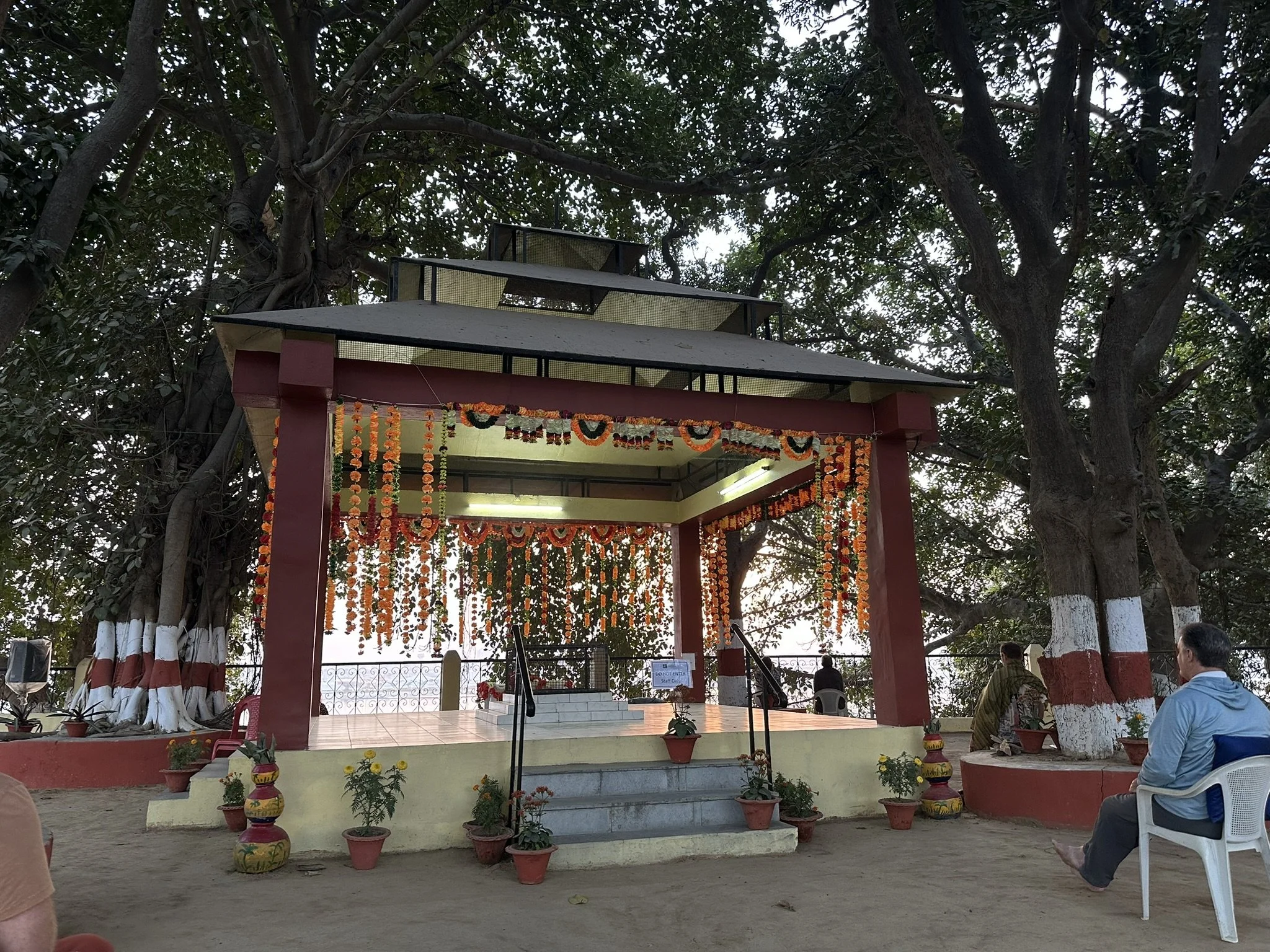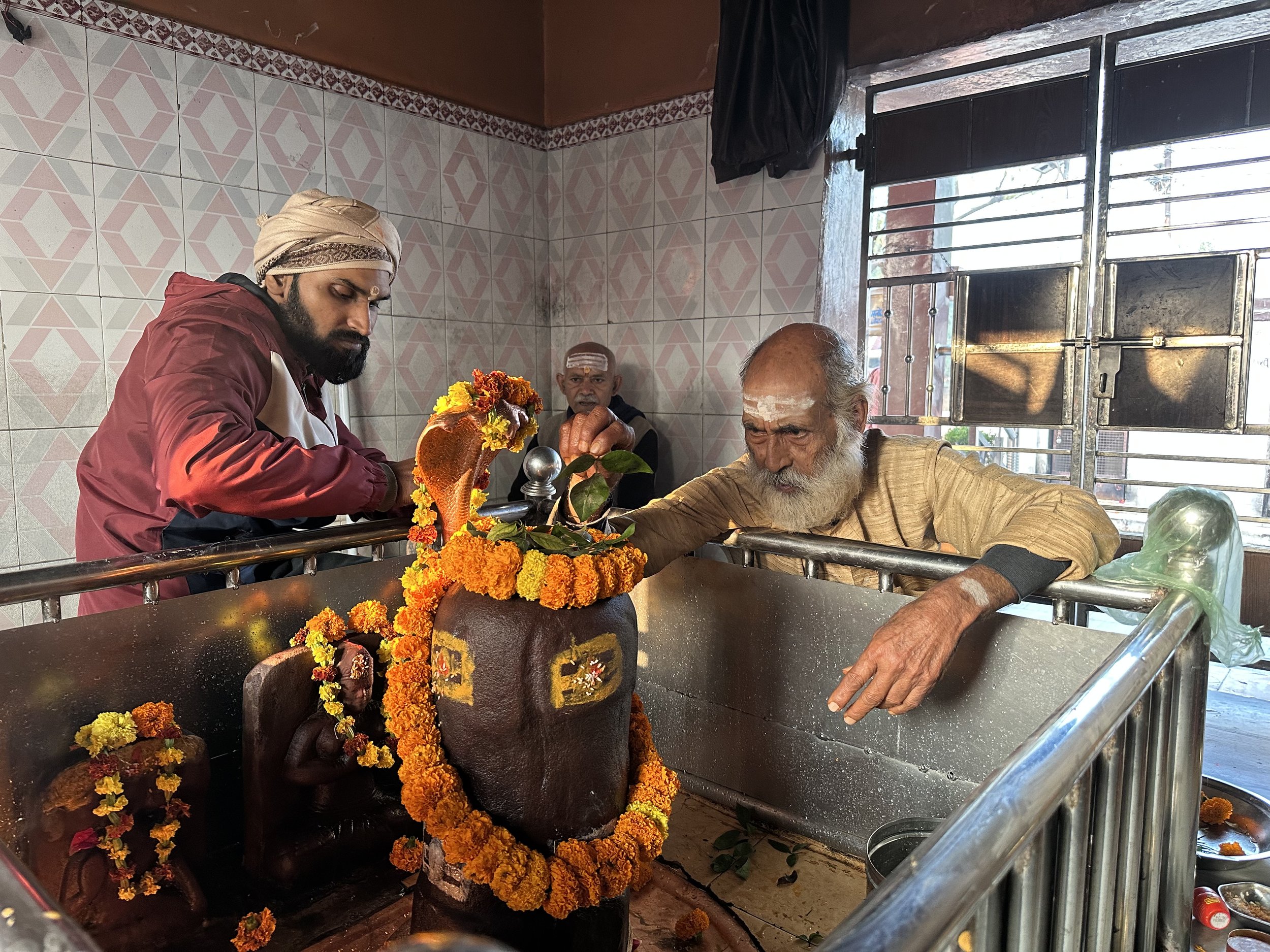Pilgrimage to the Mother: A Journey Into the Heart of India
They say a true pilgrimage begins long before your feet touch sacred ground and mine began not only the moment I boarded the plane to India, but 15 some years earlier when my mentors were taken by Rudiji to many of the sacred cities and sites. I heard the mystical stories, the way that myth and magic are woven into the fabric of Indian culture, quite the opposite of our “rational” Western existence that is really, anything but rational.
The journey was long, stretching across continents and time zones, but even the exhaustion carried a quiet excitement. I landed in Delhi around 10 PM, the city already humming with a kind of crazy chaos that would soon become familiar. Although the hotel was less than half a mile from the airport, it took nearly two and a half hours to get there. Cars, buses, tuk-tuks, bicycles, motorcycles all woven together in a symphony of constant horns, humanity, and heat. Somehow, it was exhilarating and mesmerizing all at once.
From Delhi, I traveled to Prayagraj, the convergence point of three holy rivers and the site of the massive spiritual gathering known as the Kumbh Mela. Upon arrival, we were shuttled to the Himalayan Institute’s campus, situated right on the banks of the Ganga. That’s where the real journey began. There were about 40 of us in the group, and I stayed in a walk-in army-style tent rugged but not without its charm. My tentmate and I shared space just feet from the sacred river, the Himalayan Institutes plot of land was once a rugged, overgrown parcel with a large gully full of large cobras. The campus was lulled and stirred by the ever-present sound of devotional chanting that echoed over loudspeakers well into the early morning hours. Actual sleep was a rare luxury.
The campus itself felt like a sanctuary guarded from the outside world, but just beyond its gates, India pulsed with contradiction. Sacred cows and water buffalo wandered freely, dodging people and motorbikes, dung piles and incense smoke. Children tugged on my arms begging on the streets, yet everywhere there was celebration - “GURU DEV!!” we shouted at passers-by and they to us, an exhale of joy and devotion woven into the very air. Everyone you passed would greet you with warmth, a light in their eyes, and a reverence for life that transcended words.
We all revere the Goddess, the mother that IS the river, with deep acknowledgment of what she has given. Sri Vidya is my spiritual path in this life and medicine work is my healing path in this life. I am truly grateful to have been gifted both.
Each morning began at dawn, we would rise at 6 AM and begin a specific sequence of mantras called Rudra Yaja, at its essence Rudra Yaga is a group practice breathing lifeforce back into humanity.. Based in fire ceremony and intended not for the personal benefit, but for collective healing, breathing fire/ radiance/ lifeforce back into humanity. That intention alone moved me deeply. Gathering around a square stone fire pit dug deep into the earth we chant and make offerings of rice, grains, and flowers cast into the flames, each with a mantra and a prayer to the Goddess Lakshmi where she is believed to live.
On our first night, we were welcomed with a special fire ritual (arati) led by a young pandit we affectionately called “the pandit with the bandaged foot.” He was a younger man who was just so, so delightful! He had wrecked his motorcycle before the festival and scraped his foot down to the bone, but he kept his spirits high and even continued to ride his motorcycle with no shoes…because that’s what you do in India! His chants were electric, his presence magnetic. We received blessings on our third eye as he lit candles, offered prayers, and held a powerful container that seemed to ripple through the cosmos.
Afternoons brought field trips into the Mela itself, where we met the sadhus, Babas, renunciate yogis, living and practicing in open-air encampments. We happened upon one such camp of sadhus practicing a very specific practice where one sits in the middle of dung piles, crescent moons around sacred fires, so that they had burned for generations. These men, their bodies dusted in ash, wore nothing but their presence. Some sat in silence while others stared in a trance of deep meditation. I’ve never seen anything like it. It was raw, it was holy, and it was real.
There was a magic to the chaos…decorated camels parading through crowds, tightrope-walking children performing above oceans of people, families from all over India gathering to dunk in the Mother River. The Ganga isn’t seen as a sacred river, the river IS the Goddess herself, the Divine in flowing form, a living, breathing being…one to be bathed in, prayed to, fed, and loved.
The second time we entered the heart of the Mela, it was absolutely the most intense experience I've had…we were nearly stampeded! The crowds surged like rivers, temples overflowed with devotion and everywhere you turned, babas and holy men offered blessings, chants, and an invitation to remember something deeper. Amidst the whirlwind, I found myself in an Indian food court of all places…sharing spiced breads and sweet chai in clay cups with a few new friends. It was a moment of grounded, belly-laughing beauty amidst the holy storm and truly a good moment, yup, in an India food court. We toasted with our tea, smashed our cups to the earth as is tradition, and let ourselves be fully there.
Every morning, I’d slip away on my own to a small Shiva temple about a quarter mile from our camp called the Nageshwar Temple. There, I had the honor of holding a ceremonial horn to pour libations over the lingam, the stone symbol of Shiva, the Great Consciousness. The Pandit could tell I was truly interested and showed me the exact hand mudra to hold the horn. I adorned the lingam with marigolds, painted the lingam with sacred colors, and chanted mantras alongside the temple priests. Over time, they welcomed me in. The elder pandit was the father of our bandaged friend, and together they made me feel part of something ancient and eternal.
On the final morning, I arrived at the temple one last time. By what felt like divine choreography, the gates were locked behind us, many others still wanting to get in. Only I, and one Indian couple, and the two pandits remained inside. What followed was a mystical, unplanned, unspeakably sacred ritual…a private, 20-minute flood of mantra, light, incense, holy water and presence. Time dissolved and I left that temple changed.
India is not a place you visit. It is a place that visits you. Mother India invited me in and I relished in all of her. She entered me, rewired me, and cracked me open. I am only at the beginning of this sacred pilgrimage, so please follow my next blog post where I continue to share this journey of a lifetime that hopefully inspires you to travel to lands that both challenge you and delight you.











